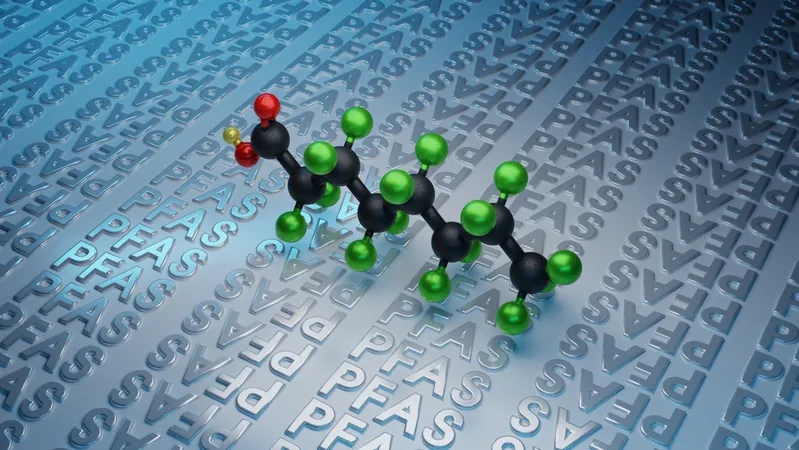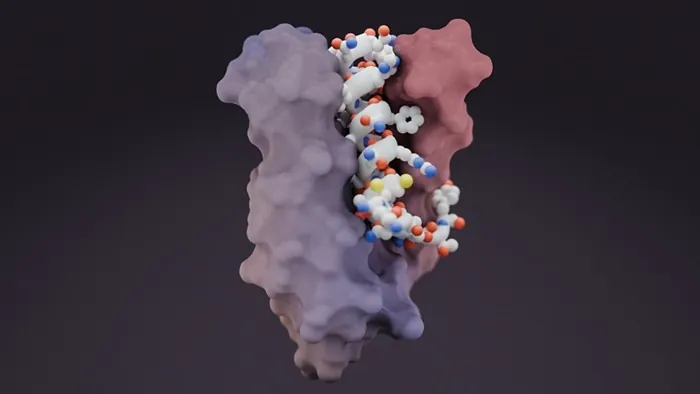
Breakthrough at ETH Zurich: A Revolutionary Method to Eradicate PFAS Chemicals!
2024-09-16
Author: Siti
Researchers at ETH Zurich have developed an innovative technique to combat the notorious PFAS chemicals—per- and polyfluoroalkyl substances—widely employed in a variety of products, including firefighting foam, non-stick cookware, and water-repellent textiles. These human-made compounds have earned the grim title 'forever chemicals' due to their extraordinary resistance to environmental degradation, leading them to persist in soil, water, and the bodies of living organisms.
The health ramifications of PFAS exposure are alarming, with studies linking these substances to severe conditions such as liver damage, hormonal disruptions, and various forms of cancer. In light of these pressing concerns, ETH Zurich's research team has taken a significant stride toward addressing the ecological crisis posed by PFAS, focusing specifically on a particularly harmful subset known as perfluorooctane sulfonates (PFOS).
The Challenge of PFOS Decomposition
PFOS, recognized for its toxic properties, has been restricted or banned in several countries. However, breaking down its chemical structure is no small feat. Comprising long carbon chains enveloped in fluorine atoms, PFOS's robust carbon-fluorine bonds necessitate a substantial energy input for breakdown. "The primary challenge lies in the strength of these bonds, which require immense energy to sever," explains Andrea Veciana, a doctoral researcher at ETH Zurich.
Existing methodologies, such as thermal decomposition—which necessitates soaring temperatures above 1,000 degrees Celsius—and photocatalysis, which struggles with both energy intensity and variable wastewater conditions, provide limited solutions. Traditional absorption methods simply move contaminants from one place to another without addressing the underlying pollution.
Enter Piezocatalysis: A Game-Changer in PFAS Degradation
ETH Zurich's researchers have unveiled a ground-breaking solution employing piezocatalysis. This technique utilizes specially designed nanomaterials that display piezoelectric properties, generating an electrical charge when mechanically stressed. This electrical charge incites a chemical chain reaction capable of breaking down PFOS molecules.
In controlled laboratory tests, the researchers successfully degraded an impressive 90.5% of PFOS, albeit with a higher concentration than commonly found in natural environments. However, this result reflects the potential of piezocatalysis for real-world applications.
Advantages that Set Piezocatalysis Apart
Piezocatalysis boasts substantial advantages over existing technologies. Its capacity to harness various sources of mechanical energy allows for greater adaptability. For instance, water turbulence in treatment facilities could be deployed to activate piezoelectric nanoparticles, enhancing PFAS degradation.
Unlike the energy-heavy thermal processes or the superficial treatment offered by absorption methods, piezocatalysis addresses the chemical pollutants directly, offering a more sustainable and energy-efficient solution.
A Step Toward a Cleaner Future
Despite the encouraging laboratory outcomes, successfully applying this technology to large-scale water treatment remains a considerable challenge. Nonetheless, the possibilities are vast. ETH Zurich's researchers envision piezocatalysis finding applications not only in wastewater treatment plants but also in agricultural water systems, potentially transforming how we manage PFAS contamination.
Additionally, the researchers are optimistic that this approach could be adapted to target various PFAS compounds and other micropollutants, potentially expanding its beneficial impact even further. However, Veciana cautions, "While our technological advancements are promising, we must also focus on policy adjustments and increased transparency to collectively tackle the PFAS dilemma."
The breakthrough of piezocatalysis signifies an exhilarating leap in the fight against harmful PFAS substances. Although the road to industrial and environmental application is not yet fully paved, this method presents a compelling, eco-friendly solution to an urgent and pervasive global crisis. Could this innovation be the answer to the 'forever chemicals' plague? Only time will tell!





 Brasil (PT)
Brasil (PT)
 Canada (EN)
Canada (EN)
 Chile (ES)
Chile (ES)
 Česko (CS)
Česko (CS)
 대한민국 (KO)
대한민국 (KO)
 España (ES)
España (ES)
 France (FR)
France (FR)
 Hong Kong (EN)
Hong Kong (EN)
 Italia (IT)
Italia (IT)
 日本 (JA)
日本 (JA)
 Magyarország (HU)
Magyarország (HU)
 Norge (NO)
Norge (NO)
 Polska (PL)
Polska (PL)
 Schweiz (DE)
Schweiz (DE)
 Singapore (EN)
Singapore (EN)
 Sverige (SV)
Sverige (SV)
 Suomi (FI)
Suomi (FI)
 Türkiye (TR)
Türkiye (TR)
 الإمارات العربية المتحدة (AR)
الإمارات العربية المتحدة (AR)